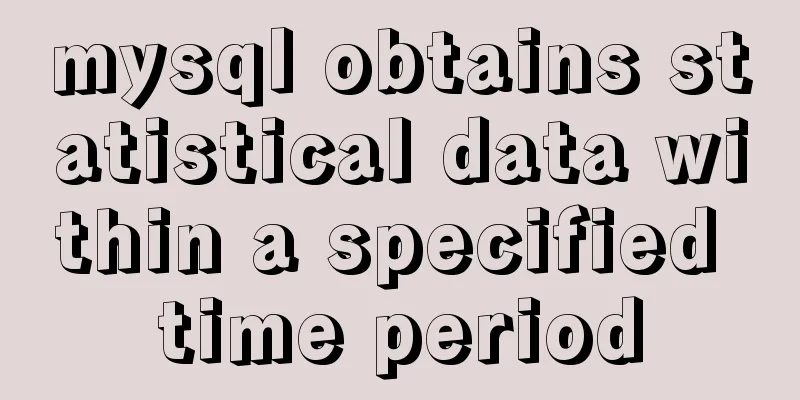Detailed explanation of pipeline and valve in tomcat pipeline mode

|
Preface In a relatively complex large system, if there is an object or data flow that needs to be processed with complex logic, we can choose to perform these complex logical processes in a large component. This method does achieve the goal, but it is simple and crude. Perhaps in some cases this simple and crude approach will bring some troubles. For example, if I want to change part of the processing logic, add some processing logic to the process, or reduce some processing logic in the process, some seemingly simple changes here make it difficult for us to start, except to change the entire component. The whole system seems to have no scalability and reusability. Is there a model that can divide the entire processing flow into details, where each small module is independent of each other and is responsible for a piece of logic processing. These logic processing small modules are connected in sequence, with the output of the previous module as the input of the next module, and the output of the last module as the final processing result. In this way, when modifying the logic, only a certain module needs to be modified, and adding or reducing processing logic can also be refined to a certain module granularity, and each module can be reused, greatly enhancing reusability. This mode is the pipeline mode to be discussed in this chapter. As the name suggests, the pipeline mode connects multiple objects like a pipeline. The overall look is like several valves nested in the pipeline, and the processing logic is placed on the valves. As shown in the following figure, after the object to be processed enters the pipeline, it passes through valve one, valve two, valve three, and valve four respectively. Each valve will perform some logical processing on the incoming object. After layers of processing, it is processed from the end of the pipeline. At this time, the object is the target object that has been processed.
Since the pipeline mode is so useful, we hope to consider using it appropriately in the program. In order to realize this mode, multiple objects need to collaborate. Please refer to the following class diagram. The Valve interface defines the calling method of the valve. Since the valves are connected with each other using a single linked list structure, it is necessary to provide operations on next. Just implement a valve and expand it. The Pipeline interface defines the methods for operating valves in the pipeline, including methods such as getting the first valve, getting the basic valve, and adding valves. The pipeline needs to expand it.
Let's look at how to simply implement a pipeline pattern: ① Valve interface
public interface Valve {
public Valve getNext();
public void setNext(Valve valve);
public void invoke(String handling);
} ② Pipeline interface
public interface Pipeline {
public Valve getFirst();
public Valve getBasic();
public void setBasic(Valve valve);
public void addValve(Valve valve);
} ③ Basic valve , the processing logic is simply to replace "aa" with "bb" in the incoming string
public class BasicValve implements Valve {
protected Valve next = null;
public Valve getNext() {
return next;
}
public void invoke(String handling) {
handling = handling.replaceAll("aa", "bb");
System.out.println("After basic valve processing: " + handling);
}
public void setNext(Valve valve) {
this.next = valve;
}
} ④ The second valve replaces "11" in the incoming string with "22"
public class SecondValve implements Valve {
protected Valve next = null;
public Valve getNext() {
return next;
}
public void invoke(String handling) {
handling = handling.replaceAll("11", "22");
System.out.println("After the Second valve is handled: " + handling);
getNext().invoke(handling);
}
public void setNext(Valve valve) {
this.next = valve;
}
} ⑤ The third valve replaces "zz" in the incoming string with "yy"
public class ThirdValve implements Valve {
protected Valve next = null;
public Valve getNext() {
return next;
}
public void invoke(String handling) {
handling = handling.replaceAll("zz", "yy");
System.out.println("After the Third valve is handled: " + handling);
getNext().invoke(handling);
}
public void setNext(Valve valve) {
this.next = valve;
}
} ⑥ For pipelines , our general operation is to set the basic valve through setBasic first, and then add other valves in sequence. The execution order is: the first added valve is executed first, and the basic valve is executed last.
public class StandardPipeline implements Pipeline {
protected Valve first = null;
protected Valve basic = null;
public void addValve(Valve valve) {
if (first == null) {
first = valve;
valve.setNext(basic);
} else {
Valve current = first;
while (current != null) {
if (current.getNext() == basic) {
current.setNext(valve);
valve.setNext(basic);
break;
}
current = current.getNext();
}
}
}
public Valve getBasic() {
return basic;
}
public Valve getFirst() {
return first;
}
public void setBasic(Valve valve) {
this.basic = valve;
}
} ⑦ Test class
public class Main {
public static void main(String[] args) {
String handling="aabb1122zzyy";
StandardPipeline pipeline = new StandardPipeline();
BasicValve basicValve = new BasicValve();
SecondValve secondValve = new SecondValve();
ThirdValve thirdValve = new ThirdValve();
pipeline.setBasic(basicValve);
pipeline.addValve(secondValve);
pipeline.addValve(thirdValve);
pipeline.getFirst().invoke(handling);
}
} The output is as follows: After the Second valve is processed: aabb2222zzyy After the Third valve is processed: aabb2222yyyy After the basic valve is processed: bbbb2222yyyy This is the pipeline mode, where one or more valves are connected in the pipeline. Each valve is responsible for a part of the logical processing, and the data flows down in the prescribed order. This mode decomposes the logical processing tasks, making it easy to install and disassemble a task unit, thereby improving the scalability, reusability, mobility and flexibility of the process. The above is the full content of this article. I hope it will be helpful for everyone’s study. I also hope that everyone will support 123WORDPRESS.COM. You may also be interested in:
|
<<: Installation process of MySQL5.7.22 on Mac
>>: A brief discussion on the binary family of JS
Recommend
Implementation of building custom images with Dockerfile
Table of contents Preface Introduction to Dockerf...
Use of Linux watch command
1. Command Introduction The watch command execute...
Detailed usage of Vue more filter widget
This article example shares the implementation me...
How to introduce Excel table plug-in into Vue
This article shares the specific code of Vue intr...
MySQL-group-replication configuration steps (recommended)
MySQL-Group-Replication is a new feature develope...
JavaScript imitates Jingdong carousel effect
This article shares the specific code for JavaScr...
Introduction to CSS style introduction methods and their advantages and disadvantages
Three ways to introduce CSS 1. Inline styles Adva...
HTML markup language - reference
Click here to return to the 123WORDPRESS.COM HTML ...
Detailed instructions for installing SuPHP on CentOS 7.2
By default, PHP on CentOS 7 runs as apache or nob...
Docker Compose network settings explained
Basic Concepts By default, Compose creates a netw...
How to build a drag and drop plugin using vue custom directives
We all know the drag-and-drop feature of HTML5, w...
JavaScript pre-analysis, object details
Table of contents 1. Pre-analysis 1. Variable pre...
In-depth understanding of mathematical expressions in CSS calc()
The mathematical expression calc() is a function ...
MySQL database architecture details
Table of contents 1. MySQL Architecture 2. Networ...
HTML markup language - table tag
Click here to return to the 123WORDPRESS.COM HTML ...











